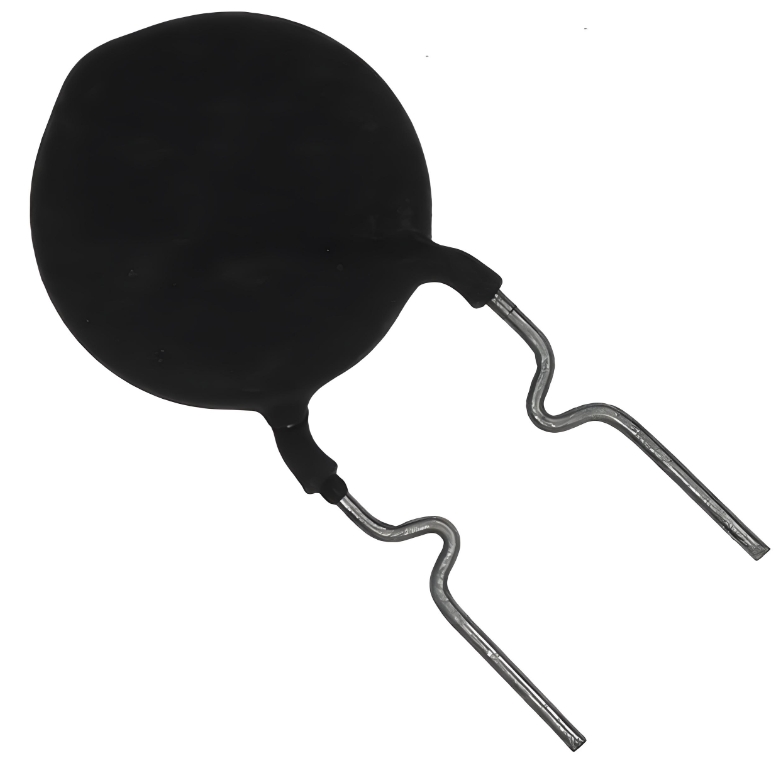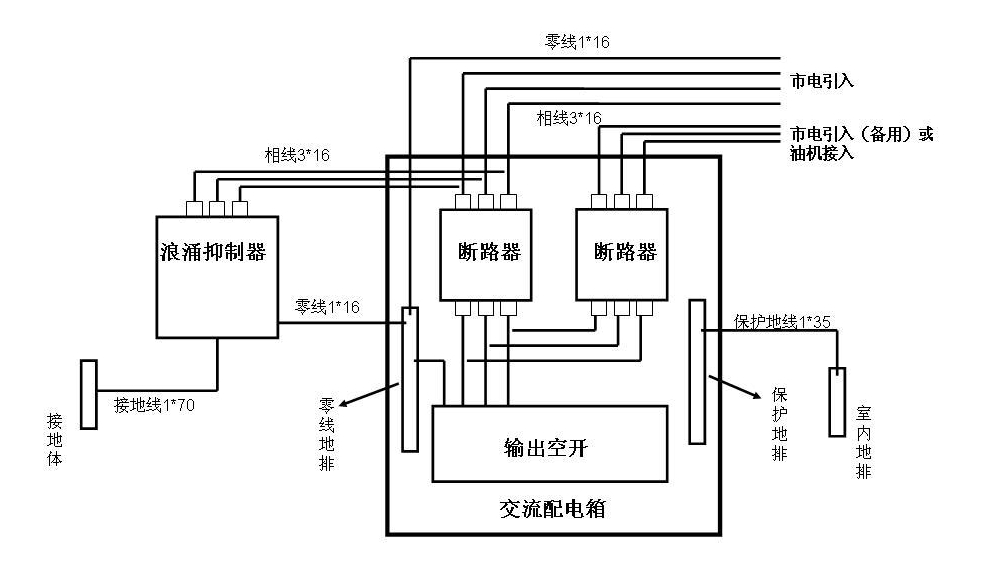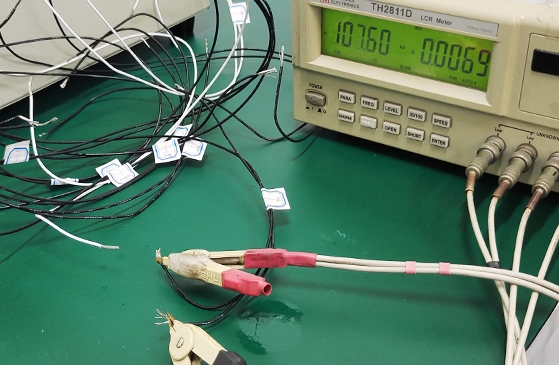About Circuit protection: Inrush current limiter (ICL) common problems summary
2024-05-29 14:32:52 1015
Inrush current limiter (ICL) plays a crucial role in modern electronic equipment and circuit design, especially in protecting sensitive components from excessive current shocks at the moment of start-up.
content
> Inrush Current limiter (ICL) Overview: working principle, type and application case details
> Advantages and disadvantages of NTC thermistors
> How to install and maintain inrush current limiter
> Fault diagnosis and replacement of inrush current limiter
> Difference between inrush current limiter (ICL) and Surge protector (SPD)

Overview of Inrush current limiter (ICL)
An inrush current limiter (ICL) is an electronic component or device designed to suppress the transient high current, or inrush current, generated by electrical equipment at the moment of startup. This inrush current usually occurs in circuits containing inductors (such as transformers, motors, capacitors, etc.), when the power supply is first switched on, due to the magnetic field establishment of the inductor or the charging process of the capacitor, it will temporarily require a much larger current than normal operation.
How does the inrush restrictor work?
The core function of the inrush current limiter is to suppress the inrush current phenomenon that may occur in the early start of the circuit, which is often caused by inductive loads (such as motors, transformers) or capacitive loads (such as power filter capacitors) at the moment of power. ICL slows down the current rise rate by temporarily increasing the impedance of the circuit, and after the circuit is stabilized, the impedance is reduced and the normal working state is restored. Taking NTC thermistor as an example, it has a high resistance at low temperatures, and gradually decreases with the increase of heat generated by the current, achieving dynamic current control.
What are the main types of inrush current limiter?
-
NTC thermistors: One of the most common types of inrush current limiter, especially negative temperature coefficient thermistors. When the circuit is just started, the NTC resistance value is high, and the resistance value decreases rapidly as the heat generated by the current increases, thus allowing more current to pass through, which is suitable for suppressing the inrush current when starting.
-
PTC thermistor: In contrast to NTC, excessive current causes the resistance to rise sharply, achieving the current limiting effect.
-
Thyristor matching circuit: By detecting the current size to control the conduction Angle of thyristor, to achieve dynamic current regulation.
-
Fixed resistance: simple and direct, but it will continue to consume energy after the current is stabilized, and the efficiency is low. Each type of ICL has its own specific application scenario, and the selection should be considered according to the load characteristics and system requirements.
-
Fixed or resetable fuses: These fuses can disconnect the circuit if abnormally high current is detected, preventing damage to the device. Resettable fuses restore circuit connections after troubleshooting.
-
Solid-state switches and controllers: Includes circuits using transistors, MOSFETs, or other solid-state devices that respond quickly to current changes and limit inrush current electronically.
-
Time delay relay: The device is temporarily connected to a high impedance path at the beginning of startup, and then switched to a low impedance path to allow normal operating current to pass through.
-
Reactor: Usually an inductive element that limits the rate of transient current change in a circuit and can therefore be used to reduce the starting inrush current.
-
Hybrid inrush limiter: Solutions that combine two or more of the above technologies to provide more flexible and efficient inrush management.
-
Intelligent electronic control circuit: The microprocessor or integrated circuit is used for monitoring and control, and the circuit behavior can be dynamically adjusted according to preset parameters to optimize the inrush current limiting effect.
An application example of inrush current limiter in circuit design
-
Transformer start-up protection: The transformer will produce a large excitation inrush current when it is initially switched on, far exceeding its normal operating current. The use of NTC thermistor as inrush current limiter in series at the primary side of the transformer can effectively limit the inrush current during start-up. NTC has a high resistance value in the cold state, and as the current gradually heats up, the resistance value decreases, allowing the transformer to complete the start-up process without damage.
-
Capacitor charging circuit: high-capacity electrolytic capacitors will also produce large inrush current in the early charging. By connecting a current-limiting reactor or NTC thermistor in series at the front end of the capacitor, the charging rate can be controlled to reduce the impact of inrush current on the rest of the circuit, especially on sensitive electronic components.
-
Motor starting circuit: When the asynchronous motor starts, because the rotor has not yet rotated, the inductive reactance is small, it will produce a large starting current. Using a soft starter (including electronically controlled inrush current limiting function) or star triangle starting mode, you can gradually increase the voltage on the motor winding, smooth start, limit inrush current.
-
Power supply: When a device such as a switching power supply or UPS is started, the charging of the input filter capacitor will cause inrush current. Using a specially designed ICL (such as a circuit containing MOSFETs and control logic) or a pre-charging circuit to limit the charging current to the capacitor at the beginning of the power supply, and then close the main circuit after the capacitor voltage is nearly stable, can effectively avoid the inrush current problem.
-
Lighting systems: Fluorescent lamp ballasts and LED drivers may also experience inrush current problems when starting up. By integrating NTC thermistors or designing complex electronic control circuits, the current can be limited in the initial start-up of the lamp, ensuring that the lamp or LED chip is not damaged and extending the service life.
How to choose the right surge limiter?
When choosing an ICL, consider:
-
Load characteristics: inductive, capacitive or resistive load.
-
Maximum inrush current value: ensures that the ICL can withstand and effectively limit the expected maximum starting current.
-
Duration: Inrush is usually short in duration and needs to match the response speed of the ICL.
-
Environmental conditions: Environmental factors such as temperature and humidity can also affect ICL performance. In addition, cost, size, and ease of installation are also important considerations.
The price and purchase channel of inrush limiter
The price of ICL varies greatly depending on the type, rated current, accuracy and brand. NTC thermistors are relatively economical due to their wide range of applications, while ICLs using more complex technologies have higher costs. Purchase channels include professional electronic components distributor INFINITECH, e-commerce platform and manufacturer direct sales. Be sure to confirm product quality and certification information when purchasing to ensure genuine products.
Advantages and disadvantages of NTC thermistors as inrush current limiter
Advantages:
-
Self-reset function: The NTC thermistor reduces the resistance due to its own heating after limiting the surge current at the start, and does not permanently change the resistance value, which is suitable for equipment that needs to be started frequently.
-
Small size and light weight: NTC thermistors have a compact size for easy installation on space-constrained circuit boards.
-
Cost effective: Compared to other complex current limiting solutions, NTC thermistors cost less and are economical.
-
Easy to install and use: NTC thermistors are usually directly in series in the circuit, requiring no complex circuit design for easy application.
-
Fast response: Although not as fast as electronic circuits, NTC is responsive enough for most applications to handle the needs of surge current limitations.

Cons:
-
Energy loss: In the process of limiting inrush current, NTC thermistors will consume a certain amount of electrical energy and heat, which will lead to reduced energy efficiency.
-
Accuracy limitations: The temperature coefficients and resistance values of NTC thermistors have relatively low accuracy and may not meet the stringent requirements for precise control applications.
-
Thermal stability: Long-term high temperature operation may affect the performance and life of NTC, and thermal design needs to be considered.
-
Response time: Although the response is fast, the thermal response of NTC may not be fast enough for applications that require a very fast response.
-
Initial resistance effect: The high initial resistance of NTC thermistors may affect the starting characteristics of some devices, especially under cold start conditions.
How to install and maintain inrush current limiter?
The steps and precautions for installing and maintaining inrush current limiter (such as NTC thermistors) are as follows:
Installation steps:
-
Select the right NTC model: Select the right NTC thermistor based on the starting current characteristics, operating voltage and rated power of the protected device to ensure that the inrush current can be effectively limited without undue impact on the normal operation of the device.
-
Design circuit layout: Determine the optimal location of the NTC thermistor in the circuit, usually directly in series at the power input or before a large capacitor. The design should consider the heat dissipation of NTC, and if necessary, the heat sink or fan can be added to assist cooling.
-
Preparation before installation: Ensure that all connection points are clean and free of oxidation, and tighten with appropriate tools and methods to avoid excessive mechanical stress damage to the NTC or connector.
-
Series installation: Connect the NTC thermistor in series between the power supply and the load, and pay attention to the correct connection of the positive and negative terminals to ensure stable installation and good contact.
-
Preheating treatment (optional) : For some applications, the NTC can be preheated first to reach the resistance value in normal working condition, reducing the temperature rise and surge current during initial start-up.

Maintenance points:
-
Regular inspection: Check the appearance of the NTC thermistor regularly to ensure that there are no cracks, deformation or signs of burning, and check whether the wiring is loose or corroded.
-
Monitoring temperature: In long-term operation, attention should be paid to the working temperature of NTC to ensure that it does not exceed the maximum working temperature specified by the manufacturer, and cooling measures should be taken if necessary.
-
Performance verification: Periodically test the startup characteristics of the device. If the startup time is prolonged or the current is abnormal, check whether the NTC needs to be replaced.
-
Replace the NTC: The NTC thermistor has a certain service life, and should be replaced in time if the performance is found to be degraded or damaged. For some applications, NTC thermistors may be designed for one-time use and need to be replaced after limiting inrush current.
-
Cleaning and maintenance: Keep the environment around NTC clean to avoid dust accumulation affecting heat dissipation. For NTC with heat sink, dust on the heat sink should be cleaned regularly.
-
Record and track: For important applications, it is recommended to record the installation date, model, maintenance history, and replacement period of the NTC to better manage and plan future maintenance activities.
Effect of inrush current limiter on circuit performance
In normal operation, high-quality ICL should have low resistance and minimal impact on circuit performance. However, some types of ICL (such as fixed resistors) continue to consume power during operation, which can affect power efficiency and generate additional heat, which needs to be considered during design.
Fault diagnosis and replacement of inrush current limiter
Inrush current limiter, especially NTC thermistors, may fail mainly include performance degradation, overheating damage, open or short circuit. Here are the steps to diagnose and replace these failures:
Fault diagnosis
-
Performance degradation: If the device startup time is significantly extended or the startup current is still too large, it may be that the NTC thermistor increases the resistance value due to long-term use, reducing the inrush current limiting effectiveness. Use a multimeter to measure the resistance value of NTC in cold and hot state, and compare it with the specification to determine whether it is out of tolerance range.
-
Overheating damage: Watch the NTC for visible physical damage, such as cracks, discoloration, or deformation, which are all signs of overheating. High operating temperature will shorten the life of NTC.
-
Open circuit: If the NTC shows no resistance at all or the resistance value is much greater than the nominal value, it may be an internal fracture that causes the open circuit. Use the resistance level of the multimeter for detection.
-
Short circuit: If the resistance value of the NTC is close to zero or very small, it indicates that there may be a short circuit, which usually means that the internal structure of the NTC is damaged.

Replacement procedure
-
Power off: Before performing any operation, ensure that the circuit to be repaired is turned off from the power supply, follow the safety procedures, and use a multimeter to ensure that the circuit has no voltage.
-
Remove the old part: Carefully remove the faulty NTC thermistor, taking care not to damage the surrounding circuit or connection points.
-
Select new parts: According to the specifications of the original NTC and the actual needs of the equipment, select the same model or compatible replacement. Consider whether you need to upgrade to a higher performance NTC to improve system stability.
-
Install new parts: Install the new NTC thermistor in situ, ensuring correct polarity and strong electrical connections. Tighten with appropriate torque to avoid excessive force.
-
Check installation: Before reconnecting the power supply, check whether the NTC is correctly installed and the surrounding environment is conducive to heat dissipation.
-
Test performance: After power-on, observe the startup process of the equipment, use a clamp ammeter to measure the starting current, and confirm that the inrush current is effectively limited and the equipment runs normally.
-
Record and trace: Record the replacement date and model for subsequent maintenance.
Safety is the primary principle throughout the process, ensuring that the relevant electrical safety codes and standard operating procedures are followed to avoid the risk of electric shock. If you are not sure how to perform this operation, you are advised to use professional technical personnel.
What is the difference between a surge current limiter and a surge protector?
The main difference between the inrush current limiter (ICL) and the surge protection device (SPD) is their design purpose, working principle, and application:
-
Design purpose:
-
Inrush current limiter: mainly designed to limit the transient large current (that is, inrush current) generated by electrical equipment when starting, to prevent these large currents from causing damage to the sensitive components inside the equipment, or to avoid causing misoperation of the circuit protection device.
-
Surge protectors: Designed to protect electrical equipment from transient overvoltages from power lines (such as lightning strikes, surges caused by grid switching, etc.), protect the safety of back-end equipment by limiting the amplitude of the overvoltage or absorbing excess power.
-
-
How it works:
-
Inrush current limiter: The use of thermistor, reactor or electronic control circuit and other means to provide a high impedance path in the early start-up of the equipment to limit the inrush current, and the impedance drops after the equipment is started normally, without affecting the subsequent normal working current.
-
Surge protector: usually contains MOV (metal oxide varistor), gas discharge tube, TVS (transient voltage suppression diode) and other components, these components present high impedance under normal circumstances, once the overvoltage occurs, it quickly changes to low impedance, the overvoltage shvolt to the ground or neutral line, protect the load equipment.
-
-
Application:
-
Inrush current limiter: Commonly found in devices containing inductive loads, such as transformers, motors, fluorescent lamp ballasts, capacitor banks, etc., installed when they are started to limit the starting current.
-
Surge protectors are widely used in various electronic equipment, communication systems, power distribution systems, electrical entrances of homes and buildings, as well as any occasions that need to protect against transient voltage damage caused by lightning or grid instability.
-
Although both inrush current limiter and surge protector are designed to protect electrical equipment, they target completely different electrical phenomena and sources of hazard.











